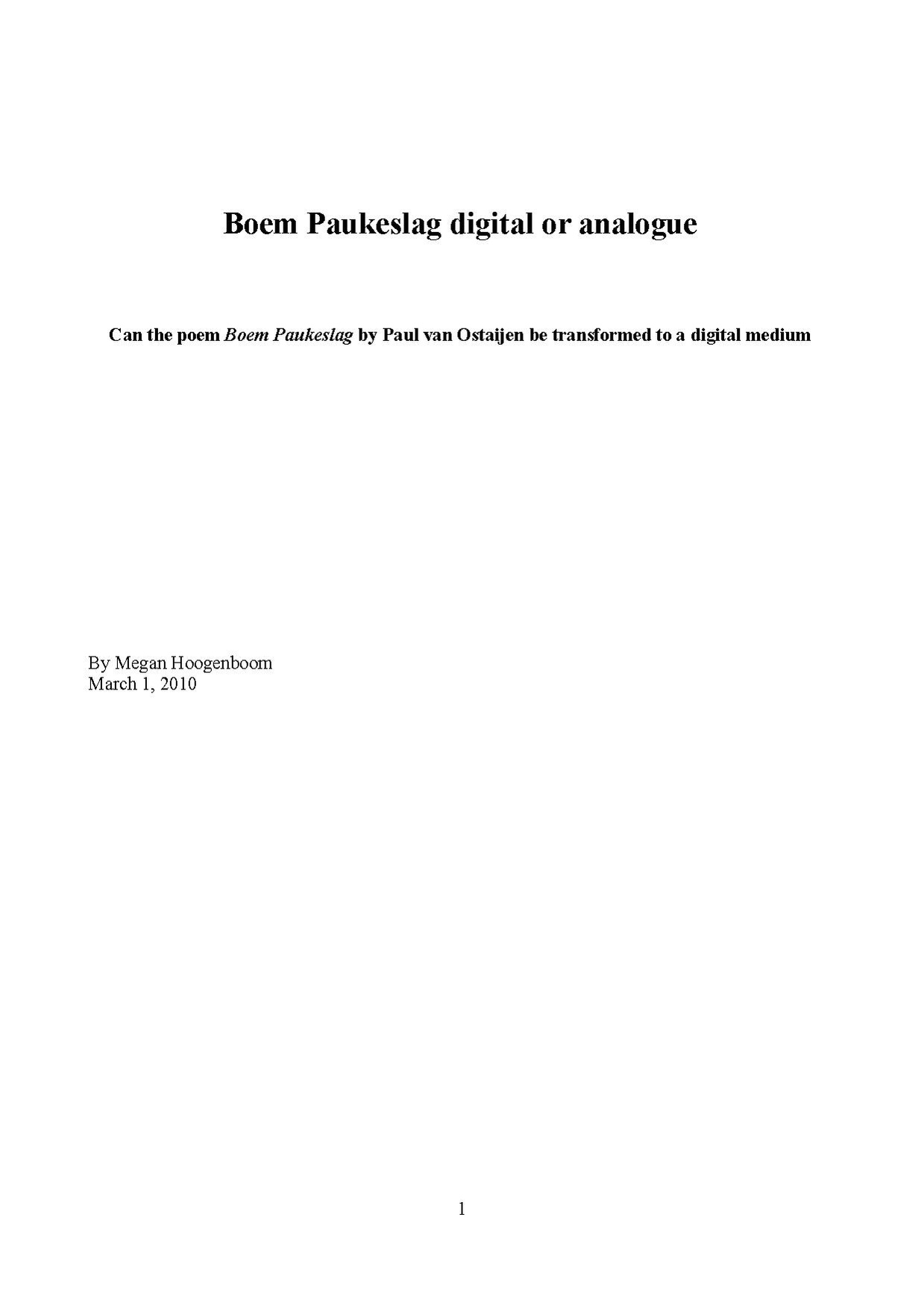|
|
| Line 1: |
Line 1: |
|
| |
|
| == Visual Poetry == | | == Visual Poetry == |
|
| |
| I was very intrigued by visual poetry, the words who are places in a certain way on a page, or multiple pages that add to the meaning of a poem. I started looking into this, and want to research it more. How did it evolve, where from etc. <br />
| |
| <br />
| |
| In my essay I want to focus on Paul van Ostaijen, a dutch visual poet in the beginning of the 20th century. His work is a beautifull example of visual poetry, and he can be seen as a poet but also as a graphic designer. The whole formatting of the page was done by hand and typesetting. The way of work was very hands-on the page. The whole page is the art-work or poet.
| |
| With the coming of digital design and digital design programs (adobe) the whole way of approaching and making a design changed. The ebooks and ereaders become more and more well known, but if it hase a future we will have to see.
| |
| In my essay I want to research if these two, so the poems of Paul van Ostaijen and the new ebooks, can be combined. If paper is no option anymore, how will visual poetry be transformed to ebooks or ereaders. <br />
| |
|
| |
| '''Things I will look at:''' <br />
| |
| [http://epc.buffalo.edu/ Electronic Poetry Centre]<br />
| |
| Book: Loss Pequeño Glazier, Digital Poetics: The Making of E-Poetries
| |
| from scroll to codex to scroll on the internet to ??<br />
| |
| Book: N. Katherine Hayles, Writing Machines, 2002<br />
| |
| [http://www.ubu.com/film/smithson.html ubu-web Robert Smithson]<br />
| |
| [http://nl.wikipedia.org/wiki/Kurt_Schwitters Kurt Schwitters]<br />
| |
|
| |
|
| |
|
| |
|
| == Attachments == | | == Attachments == |
|
| |
|
| *[[File:User_Megan_Hoogenboom_essay_PaulvOstaijen_essay.pdf]] | | *[[File:User_Megan_Hoogenboom_essay_PaulvOstaijen_essay.pdf]] |

